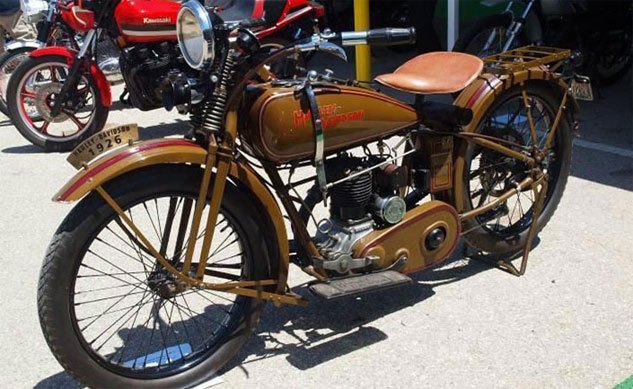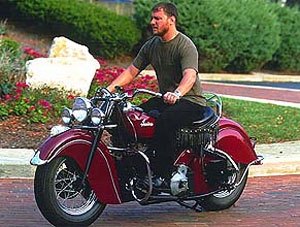Modern Practices of Insuring Vintage Motorcycles
A 1938 Speed Twin owner probably doesn’t entrust the protection of his Coventry Triumph to a duck or gecko. A first-year model of this vintage is too rare and collectible for a common insurance agency to recognize the bike’s intrinsic value. Better off using the services of a company that specializes in motorized antiquities.
When shopping for vintage motorcycle insurance, it’s important to investigate how many miles the bike can be ridden annually.
But what elements quantify a motorcycle as being vintage, classic or antique? Is there a cutoff date to a motorcycle being considered classic or of particular value? Is a stock, original-condition 1985 Suzuki GSX-R750 a collectable vintage motorcycle and, if so, how do you go about properly insuring it?
For the purpose of avoiding any pedantic arguments of specific description we’ll use the generally accepted number of 25 as the baseline age to being considered vintage. And by vintage we’re also referring to classic and antique, as these terms – unlike the rigidly defined world of old automobiles – are used interchangeably to describe bikes older than the legal drinking age.
So, yes, an ’85 Gixxer 750 certainly qualifies as a model year motorcycle for which any number of specialty insurance agencies will provide coverage. Agencies such as Hagerty, Classic Auto Insurance, American Collectors, etc.
When shopping for vintage motorcycle insurance, it’s important to investigate how many miles the bike can be ridden annually. This number will vary between insurance carriers and will affect the price of the policy. Most plans are designed for a minimal amount of miles each year or none at all. Frequent riding increases the risk of a claim being made, but some insurers may be flexible depending on your age and driving record so check with your agent.
Agreed-Upon Value
Standard insurance policies are geared toward late-model bikes ridden daily. In contrast to collectible motorcycles, whose value increases over time, late model bikes depreciate and the insurer will pay only out a value equivalent to its current market value replacement, which may be substantially less than its original worth.
Agreed-upon value protects vintage bike owners by including any investments made in the repair or restoration of the motorcycle, as well as compensating the owner for any value appreciation. Having the motorcycle appraised prior to determining its agreed-upon value ensures the owner is receiving satisfactory coverage.
Another consideration when shopping for vintage bike insurance is the availability of roadside assistance and towing. Old bikes are cool but are also prone to breakdown more often than their modern counterparts. If you plan to occasionally ride yours further than a few miles from home, or trailer the bike somewhere further then ride it, roadside assistance and a towing policy (flatbed truck only) is a recommended aspect to your vintage bike policy.
Lastly, if you’re as vintage as the bike you’re riding, don’t forget to check with the AARP. Depending on your insurance needs, the bike you own and the amount of riding you’ll be doing, the insurance AARP offers through Foremost may be the best way to go or could afford you another discount through your chosen insurance company.
A former Motorcycle.com staffer who has gone on to greener pastures, Tom Roderick still can't get the motorcycle bug out of his system. And honestly, we still miss having him around. Tom is now a regular freelance writer and tester for Motorcycle.com when his schedule allows, and his experience, riding ability, writing talent, and quick wit are still a joy to have – even if we don't get to experience it as much as we used to.
More by Tom Roderick

































Comments
Join the conversation